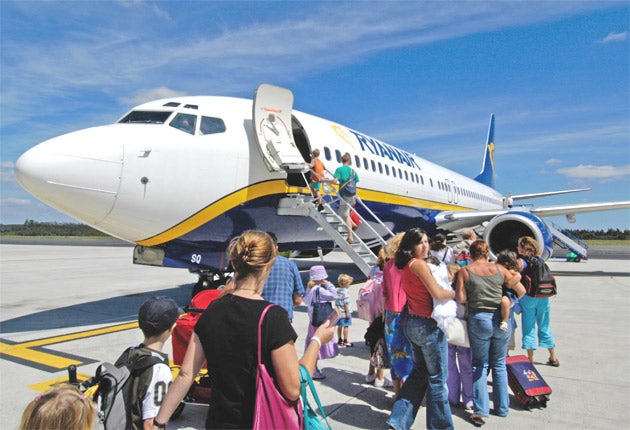The quickest way to board an airplane? Just use an algorithm

Your support helps us to tell the story
From reproductive rights to climate change to Big Tech, The Independent is on the ground when the story is developing. Whether it's investigating the financials of Elon Musk's pro-Trump PAC or producing our latest documentary, 'The A Word', which shines a light on the American women fighting for reproductive rights, we know how important it is to parse out the facts from the messaging.
At such a critical moment in US history, we need reporters on the ground. Your donation allows us to keep sending journalists to speak to both sides of the story.
The Independent is trusted by Americans across the entire political spectrum. And unlike many other quality news outlets, we choose not to lock Americans out of our reporting and analysis with paywalls. We believe quality journalism should be available to everyone, paid for by those who can afford it.
Your support makes all the difference.Forget "speedy boarding": airlines that instruct passengers to board short-haul jets in a seat sequence that begins 30F, 28F, 26F and ends 5C, 3C, 1C could save a fortune by cutting the time the aircraft spends on the ground.
Click HERE to view graphic (168k jpg)
A complex algorithm devised by an American astrophysicist has been shown to double the speed in which passengers board an aircraft.
Dr Jason Steffen, a scientist at the Fermi National Accelerator Laboratory in Illinois, applied mathematical modelling to the problem of boarding a Boeing efficiently. His solution requires passengers to board from the back of the plane, by alternate rows, filling window seats on one side of the cabin first. The pattern is repeated for the other side of the cabin, then applied to middle, and then aisle, seats. In a test for an American TV science programme, the Steffen Method halved the time spent boarding using conventional systems.
Michael O'Leary, the chief executive of Ryanair, expressed interest in the concept: "We will always look at anything that would improve our 25-minute turnarounds or our No 1 punctuality," he said. At present the airline sells "priority boarding" at £5 a time to a maximum of 90 passengers per flight.
On airlines that use assigned seating, the standard means of boarding is to call passengers by block: row 21-30 in a narrow-bodied jet, followed by rows 11-20 and 1-10. But tests conducted in a mock-up of a section of a Boeing 757 showed this method took 414 seconds – almost seven minutes – and was the least efficient of those tested.
Dr Steffen told The Independent: "I was surprised that 'block boarding' did so badly. I was expecting it to be closer to the time of random boarding. I didn't account for seat interferences, assuming them to be relatively less important than aisle interferences."
Evidently the impediment to smooth boarding is other people – plus their awkward luggage, a result of financial penalties for checking in bags.
A more sophisticated variant, in which passengers are boarded strictly by row from the rear of the aircraft, was significantly quicker at 371 seconds. Yet an entirely random boarding pattern with no assigned seats, as practised by many budget airlines, scored much better at 284 seconds – almost one-third quicker than "full-service" carriers with pre-assigned seats.
The Steffen method enabled all passengers to be boarded and seated in just 216 seconds, a rate of three seconds per person. Applied to a typical 180-seat no-frills aircraft, this radical approach could slice nine minutes off the time each aircraft spends on the ground. Over a year, this could save two weeks – worth £1m – per plane.
Join our commenting forum
Join thought-provoking conversations, follow other Independent readers and see their replies
Comments